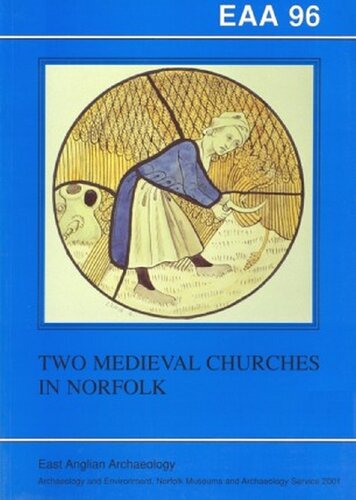Product desciption
Two Medieval Churches In Norfolk Olwen Beazley Brian Ayers by Olwen Beazley, Brian Ayers 9780905594330, 0905594339 instant download after payment.
With contributions from H. M. Appleyard, Steven Ashley, Jon Bayliss, Elisabeth Crowfoot, Carolyn Dallas, Val Fryer, Frances Healy, Stephen Heywood, Mike Heyworth, Julia Huddle, Irena Lentowicz, Sue Margeson, Christine Osborne, Penelope Rogers, Ann Stirland and Margot Tillyard.
At St. Martin-at-Palace, the earliest identified activity consisted of a burial, dated by radiocarbon to the Middle Saxon period. This was succeeded by the first of two timber structures dated to the 10th/11th and the 11th centuries, both of which are interpreted as churches. Subsequently, chalk and flint foundations for a bicellular structure were built, contemporary with the extant east wall of the church. The building erected on these footings has been dated, on stylistic grounds only, to the 11th century. Intramural burial complicated the excavation, removing much evidence for medieval usage. Post-medieval coffin furniture provided the major part of the finds assemblage, adding to the growing national corpus of evidence for burial practice.
Excavation at St Michael, Bowthorpe, revealed three main periods of use and disuse of the church of St. Michael. A small building of chancel, nave and tower was erected above massive footings in the 11th or 12th century. The chancel was replaced in the 14th century and a north nave porch added about the same time. The church was ruinous by the 16th century. Repairs in the 1630s created a chapel in the chancel, the nave having collapsed or been demolished. The tower was used as a chimney for an oven or corn dryer prior to its demolition, probably before 1790. Intramural burial was slight with finds being largely confined to decorative stonework, plaster, glass and tile.


